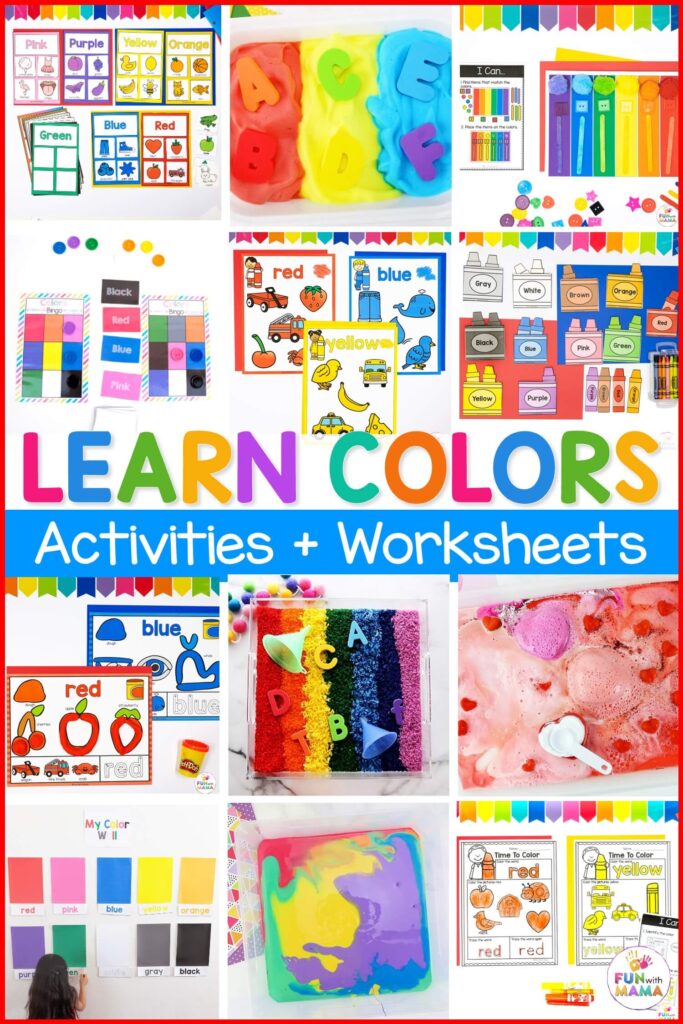

Have fun with this teaching colors activities pack that will help make learning colors easy and fun for teachers and kids! Check out these 23 hands-on activities, no prep worksheets, and centers to help preschoolers know their colors in no time!
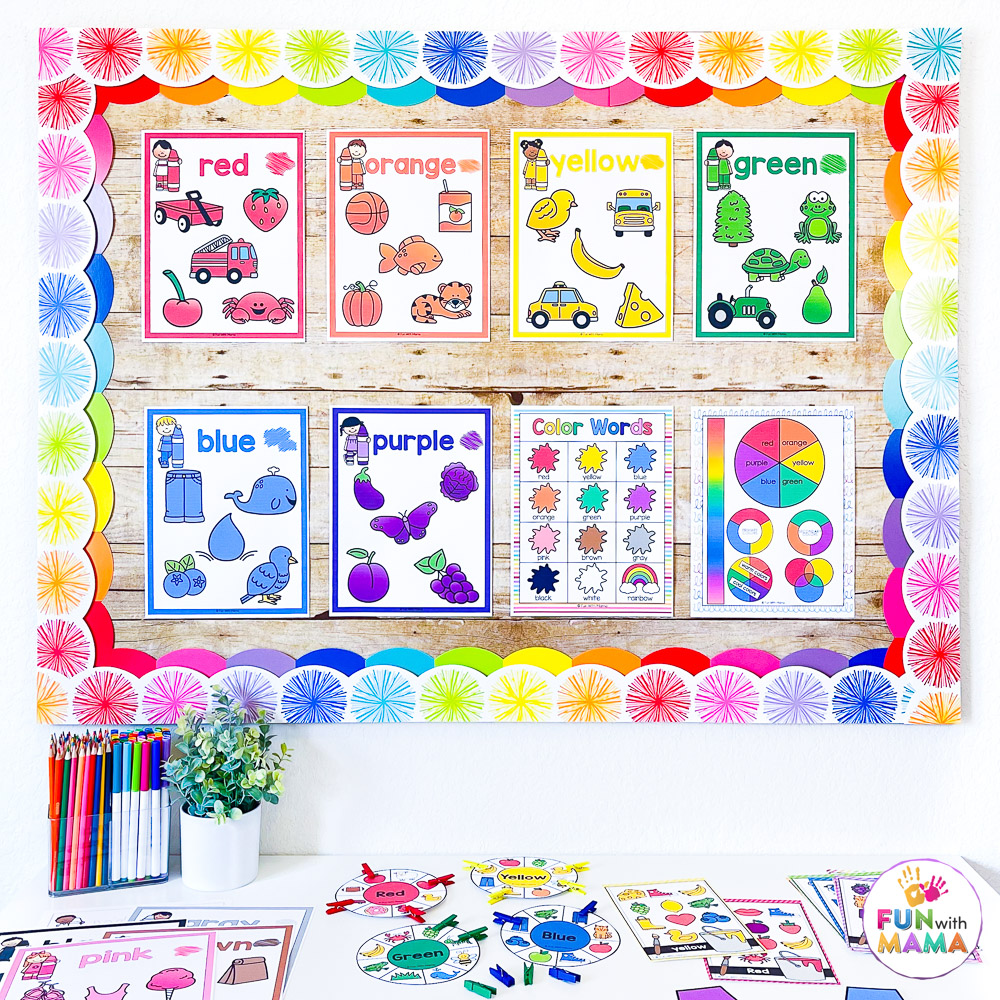
Colors are an integral part of our world. They surround us, define our surroundings, and add vibrancy to our lives. For preschoolers, learning colors is not just about distinguishing between red, blue, and green; it’s a fundamental aspect of their cognitive development.
We are around colors 24/7, and children love learning and identifying the colors they see.
Help them develop color vocabulary words and encourage creativity and experimentation with color-themed activities.
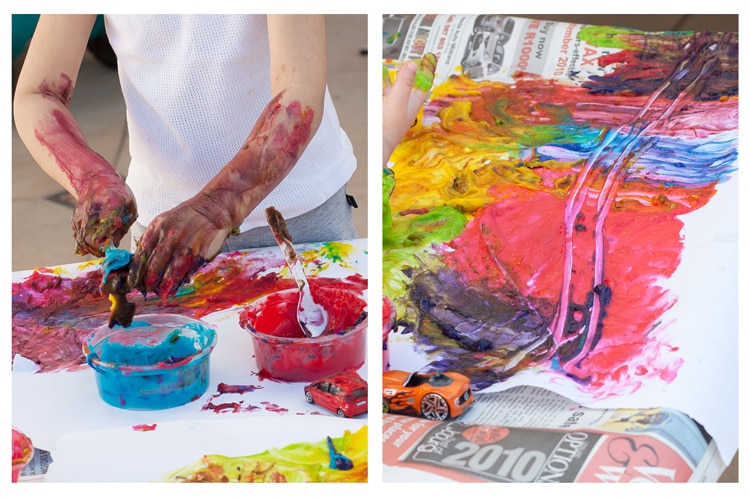
1. Language Development: Learning colors introduces preschoolers to new vocabulary. It helps them expand their language skills as they identify and communicate the names of different colors. This early exposure lays the foundation for more complex linguistic concepts later on.
2. Cognitive Development: Identifying colors encourages critical thinking and problem-solving skills in preschoolers. It requires them to observe, categorize, and differentiate between various hues, stimulating cognitive processes and enhancing their ability to organize information.
3. Visual Discrimination: Teaching colors enhances preschoolers’ visual discrimination skills. By recognizing subtle differences in shades and tones, they develop a keener sense of observation, which is essential for tasks such as reading, writing, and solving puzzles.
4. Artistic Expression: Understanding colors empowers preschoolers to express themselves creatively. Through arts and crafts activities, they learn to mix, match, and combine colors to create new shades and forms. This exploration fosters imagination, self-expression, and a sense of accomplishment.
5. Conceptual Understanding: Learning colors lays the groundwork for understanding abstract concepts such as sorting, patterns, and sequencing. Preschoolers begin to recognize patterns in their environment, categorize objects based on color, and understand basic concepts of symmetry and symmetry.
6. Social Interaction: Colors provide a common language for preschoolers to communicate and interact with their peers. Sharing experiences related to colors fosters social connections, promotes teamwork, and encourages cooperative play during group activities and games.
7. Preparation for School: Proficiency in recognizing colors is often an early academic expectation in preschool and kindergarten curricula. Children gain confidence and readiness for formal education by mastering colors early on, setting them on a path toward academic success.
8. Life Skills: Beyond academic and cognitive benefits, knowing colors is practical in everyday life. It helps preschoolers identify objects, follow instructions, and navigate their surroundings safely. For instance, understanding traffic lights and safety signs requires knowledge of color recognition.
9. Multicultural Awareness: Introducing children to colors from various cultures expands their worldview and promotes multicultural awareness. Exploring colors from different traditions and ethnicities fosters appreciation for cultural diversity and encourages inclusivity from an early age.
10. Parental Engagement: Teaching colors provides opportunities for parents and caregivers to engage actively in their child’s learning journey. Through playful activities, such as color-themed scavenger hunts and storybook reading, parents can bond with their preschoolers while fostering their educational development.
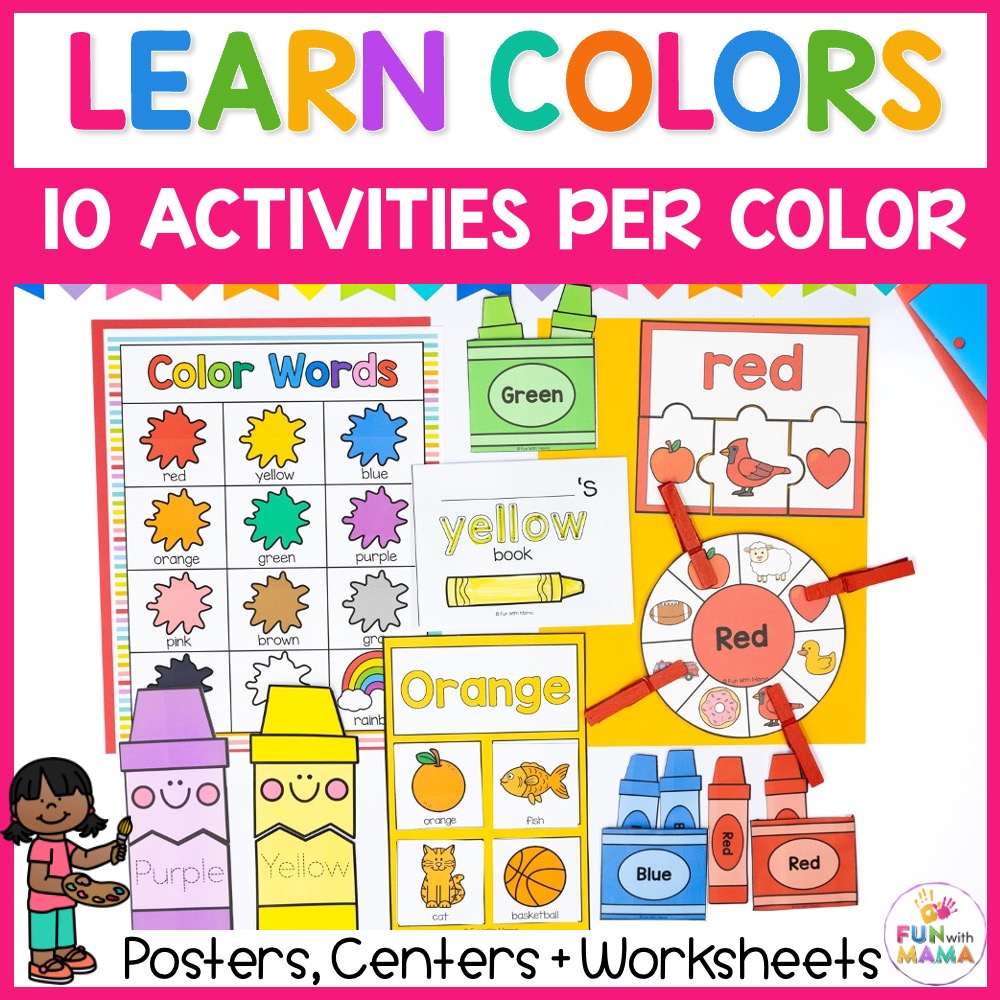
First, I will show you some of the color activities for preschoolers in the Teaching Colors Activity pack; then, I will show you some fun free printable color activities, sensory bins, science experiments, and more.
Here are the colors that are included:
Check out what is included below:
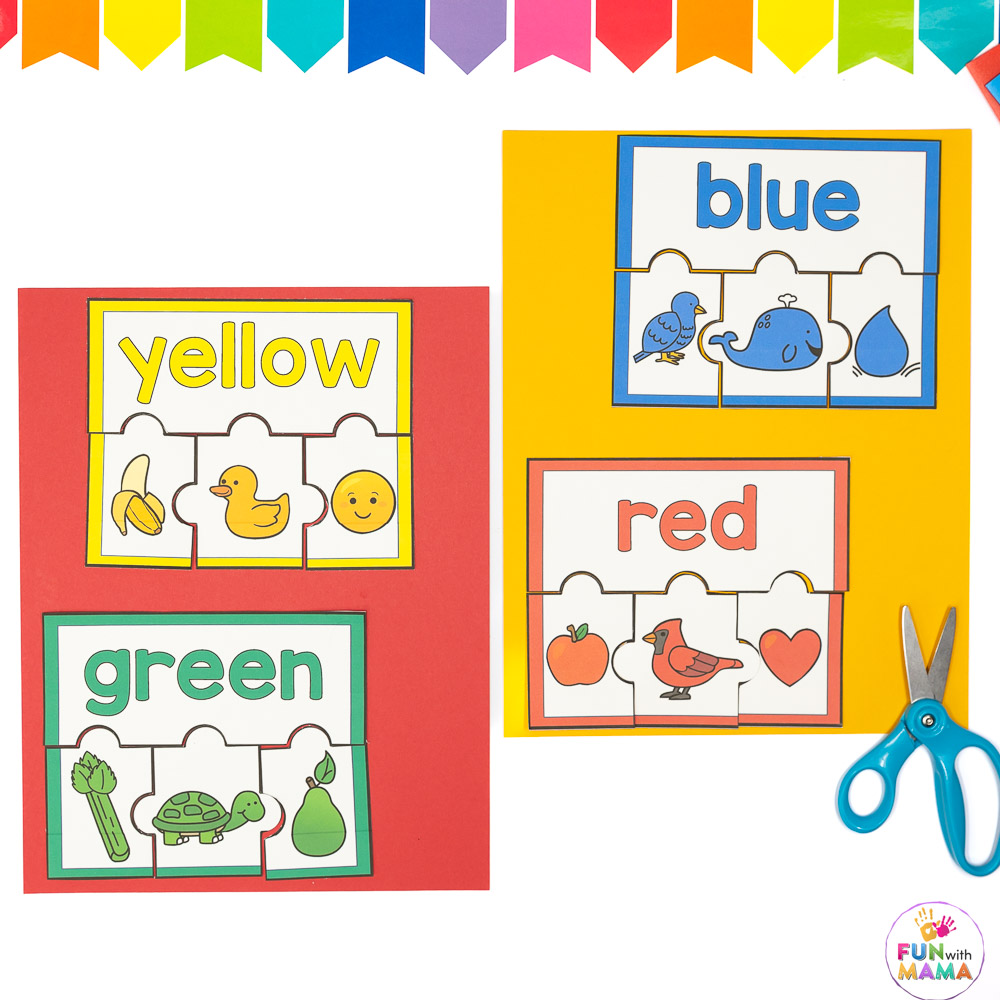
Create a puzzle using matching color pieces. This puzzle set includes 4 piece puzzles.
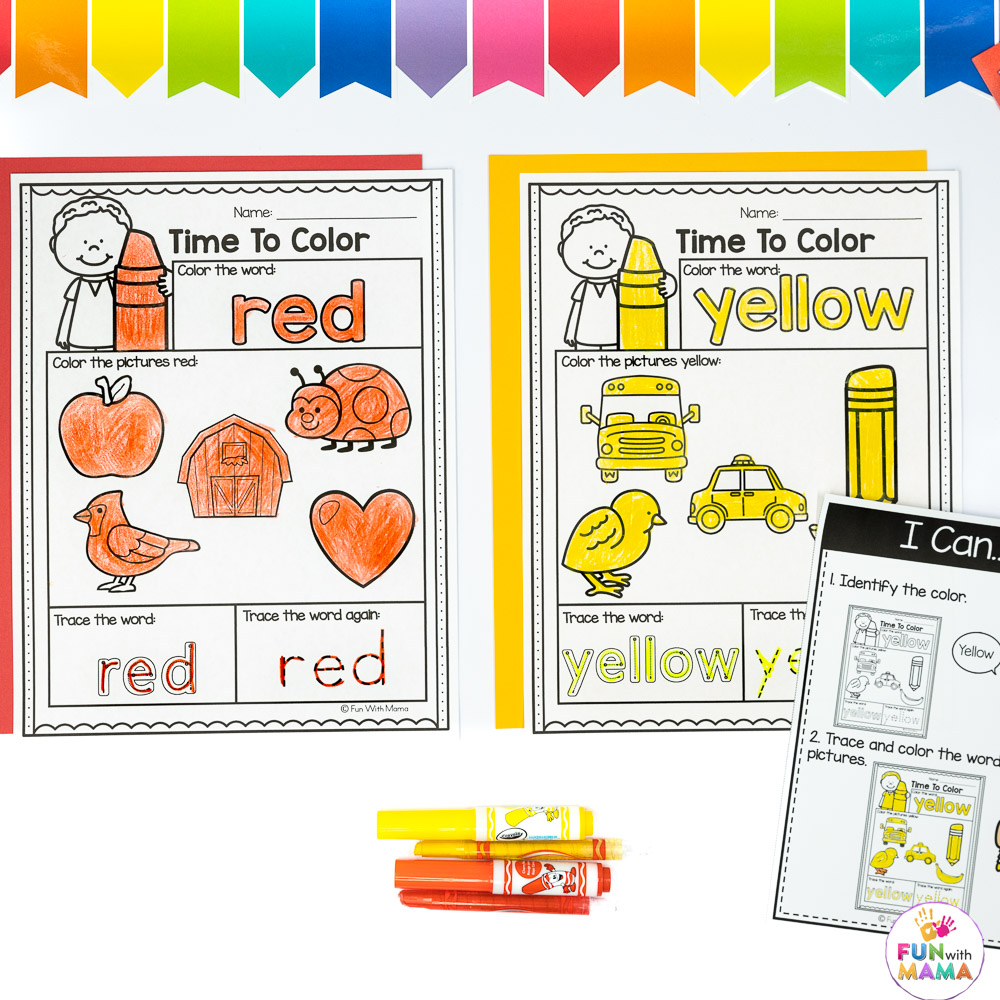
In each worksheet, children will color the word, color the picture, and then trace the word two times. You will find more examples of the worksheets in the worksheet section below. Above you can see the yellow worksheet and red worksheet all filled in using the same color marker and crayon.
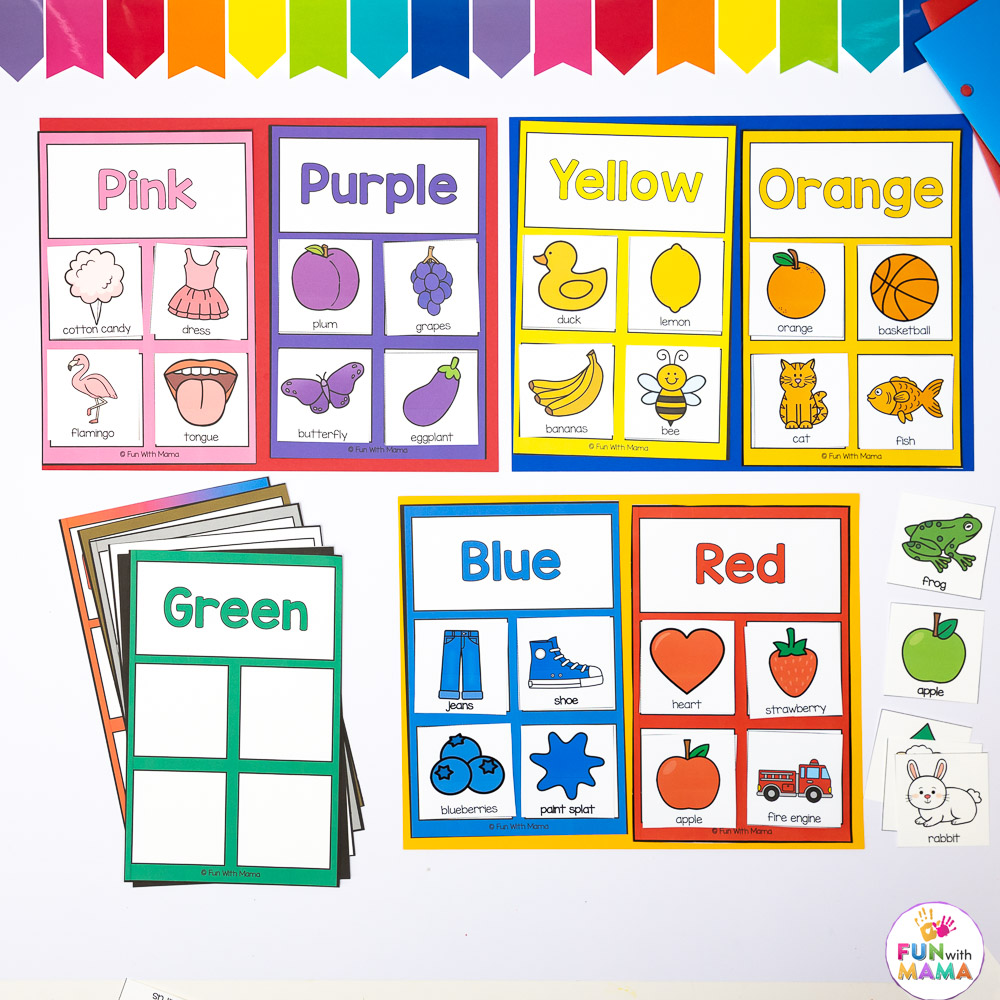
Find the four matching color real-life everyday pictures and place them on the correct color mat.

First, students will gather the correct buttons. Then they will match the buttons to the correct spot on the mat. Please note that colored buttons are required for this activity.
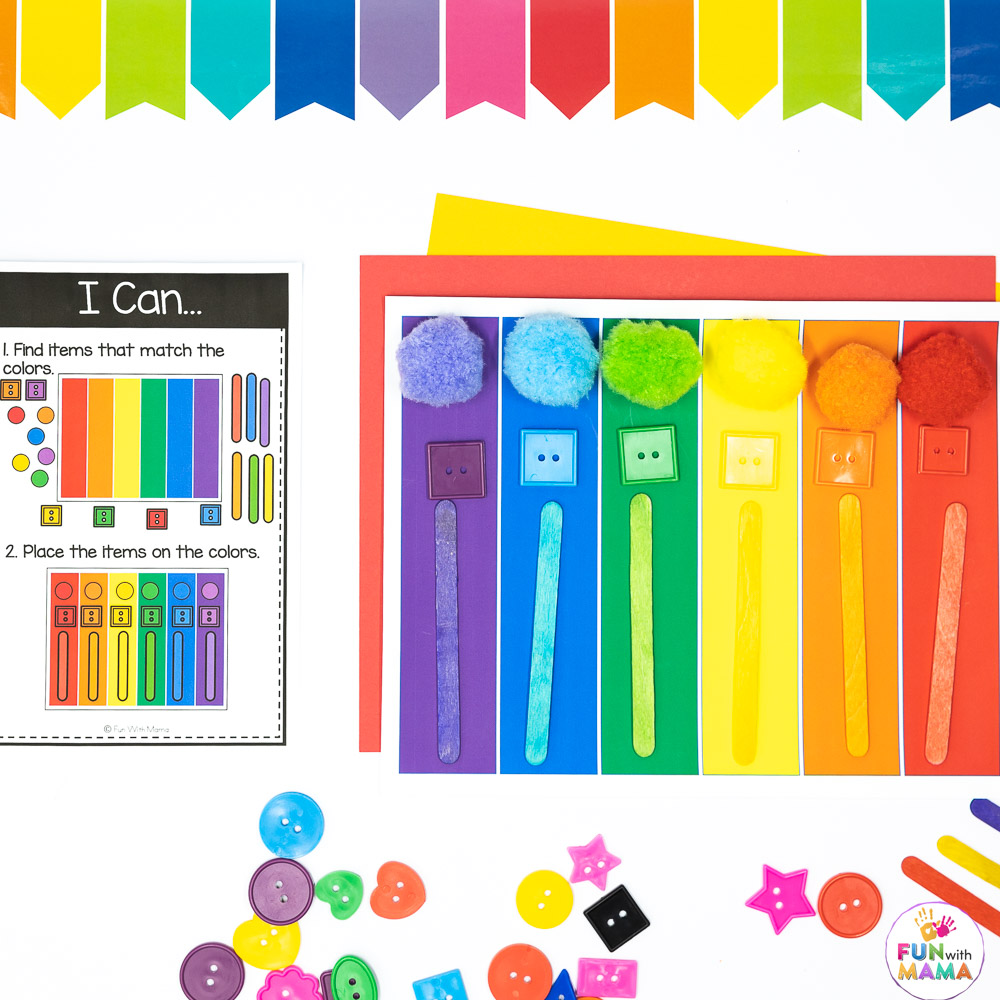 buttons and craft sticks on a rainbow mat" width="1000" height="1000" />
buttons and craft sticks on a rainbow mat" width="1000" height="1000" />
Use these rainbow mats as a scavenger hunt with items you have lying around. In the example, I used popsicle sticks, colored buttons and pom poms.
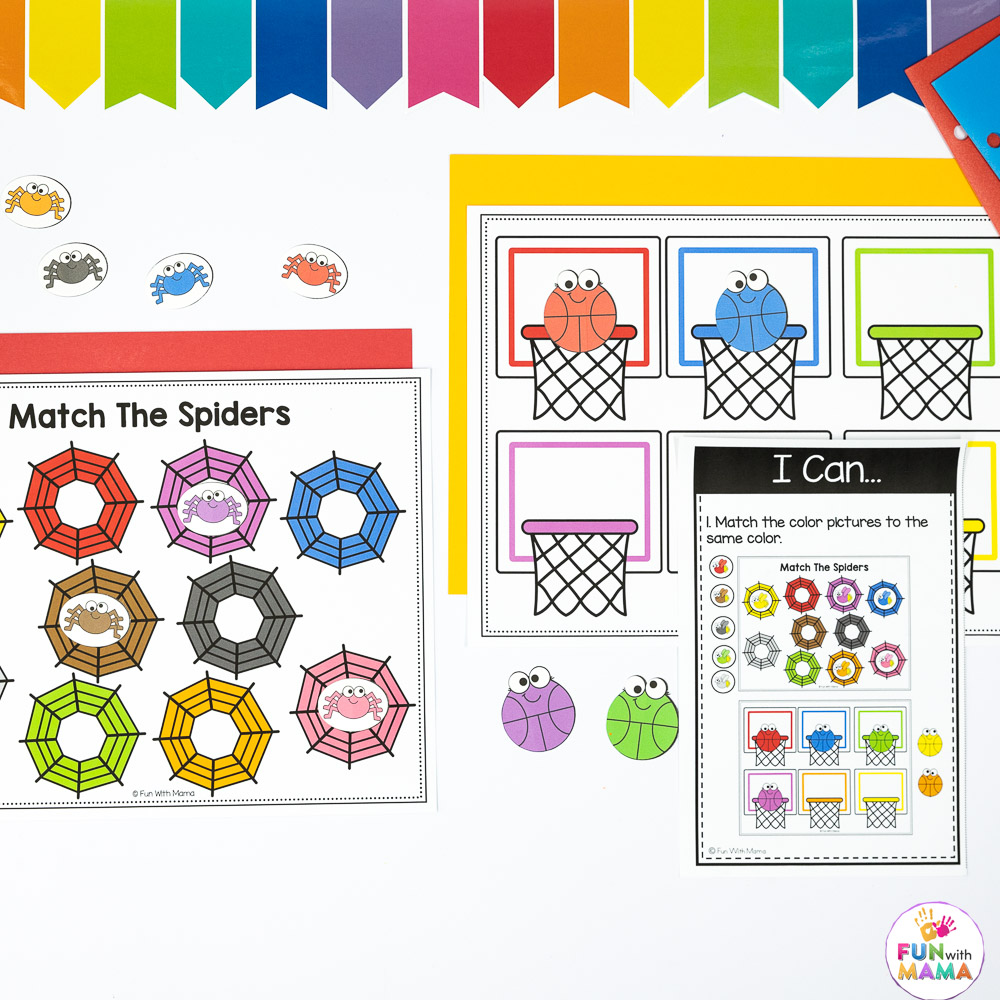
The activity pack includes a variety of color matching mats. Laminate the sheets and use velcro dots to match the colored pieces to the right color on the mat.
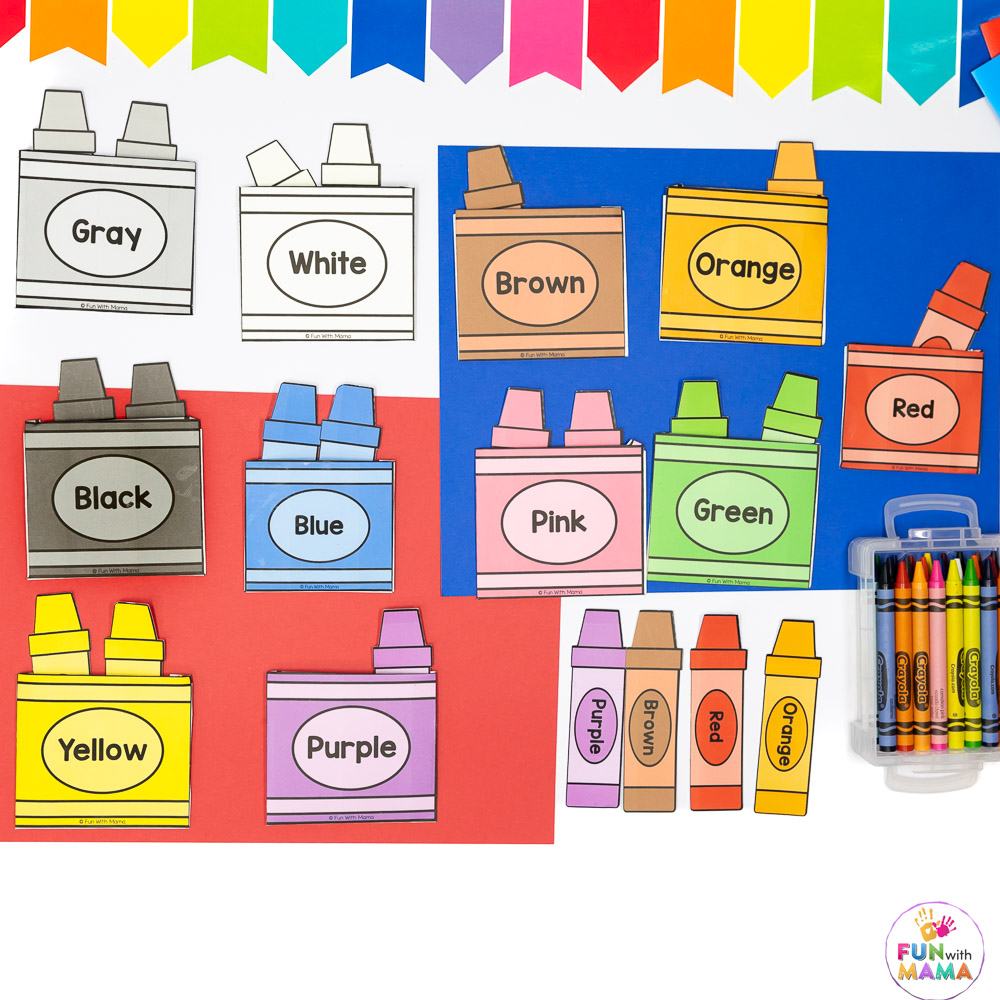
Sort the crayons according to the crayon color boxes.
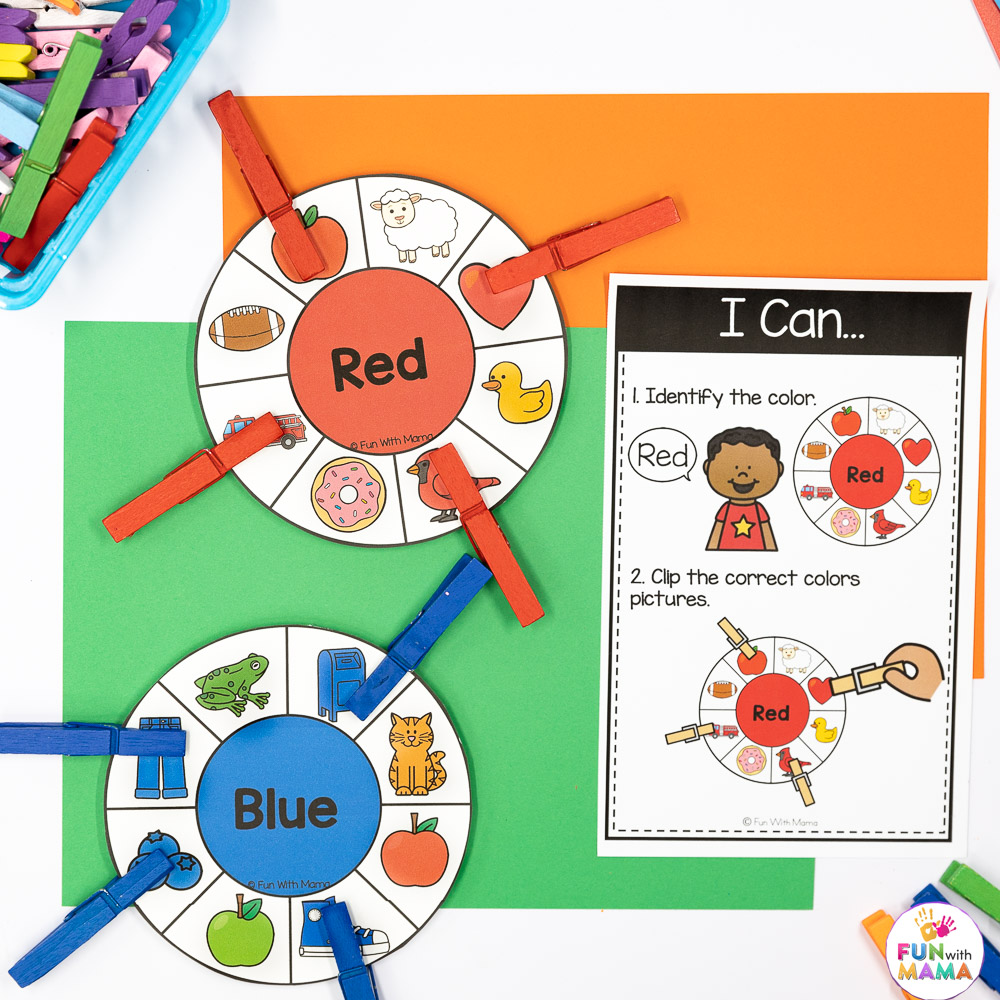 red and blue" width="1000" height="1000" />
red and blue" width="1000" height="1000" />
Work those fine motor skills while working on color recognition with the color wheels.
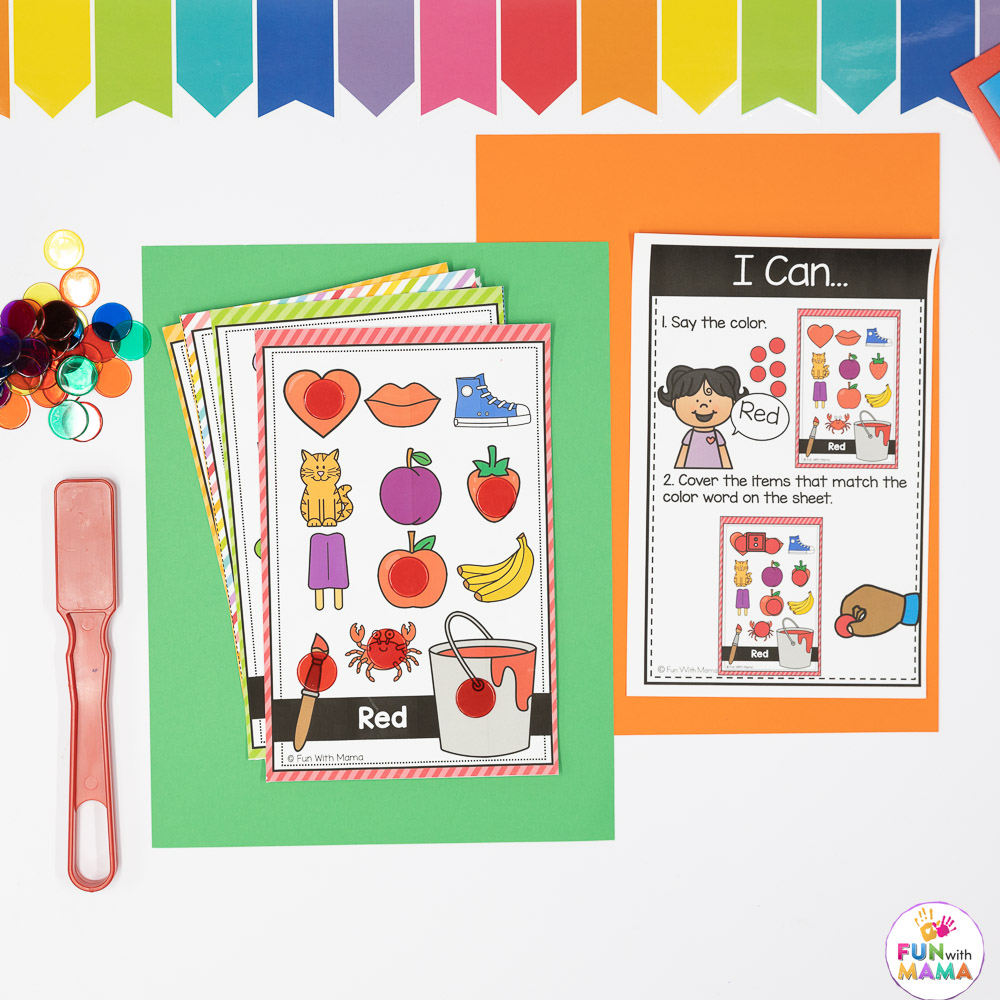
Use a counting cube, bingo marker, mini eraser, or other small manipulatives to identify the correct color pictures.
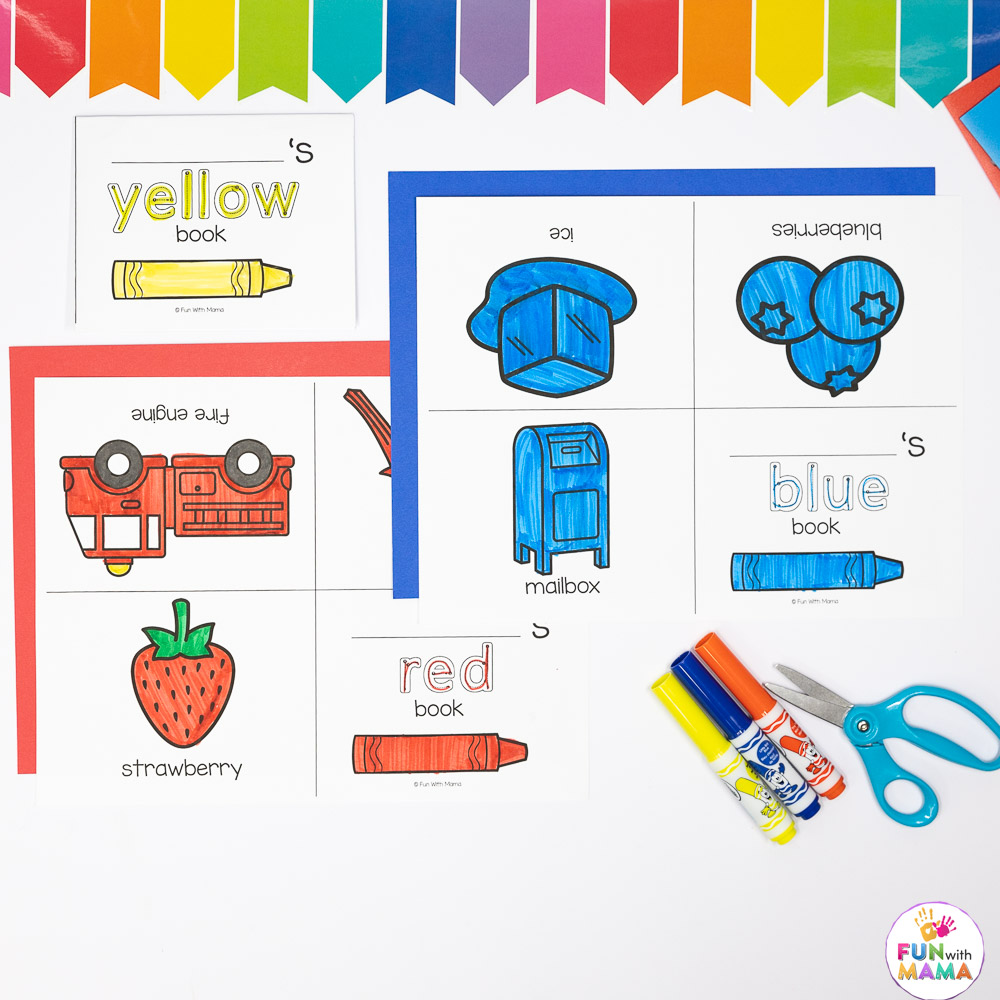
Color the pictures, then fold them to create a color mini book.
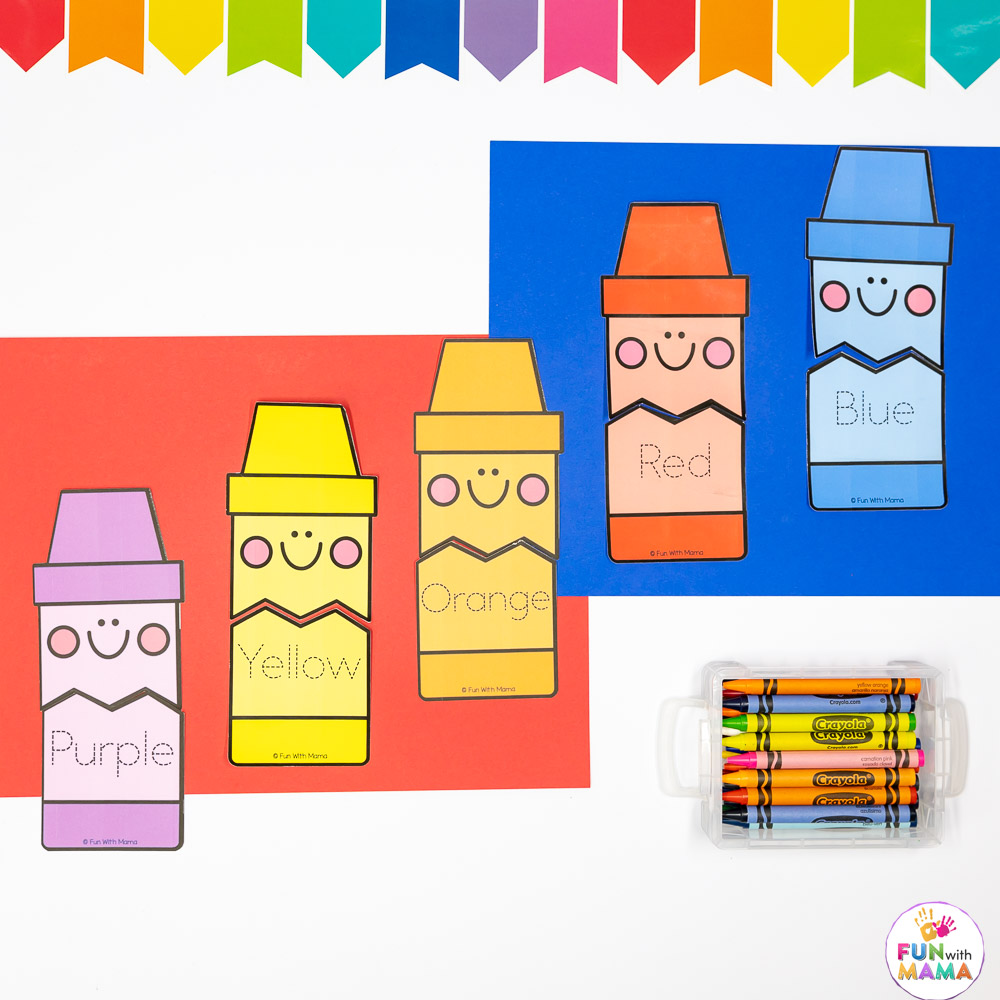
This 2 piece puzzle will have students match the uppercase crayon to the lowercase piece. Students can then trace the word.
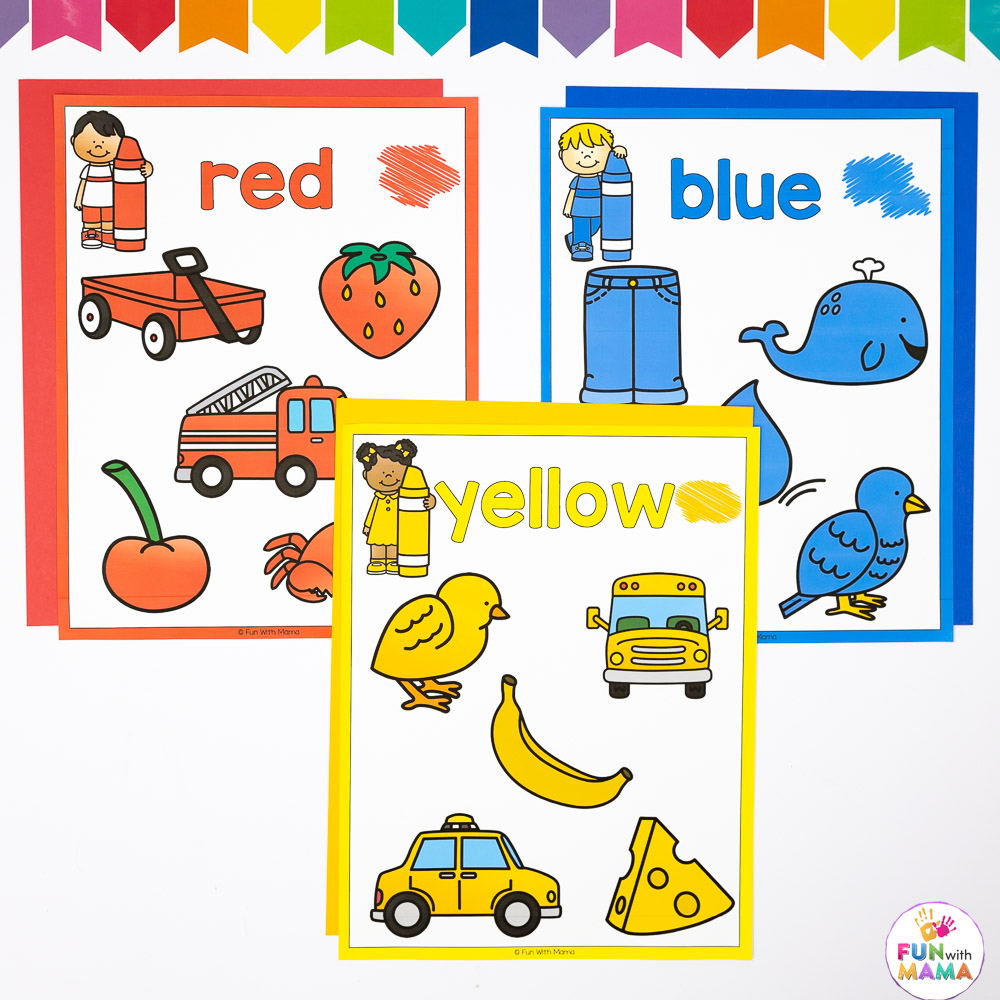
Hang these around your classroom or home as you work on each color. Then discuss the name of each picture.
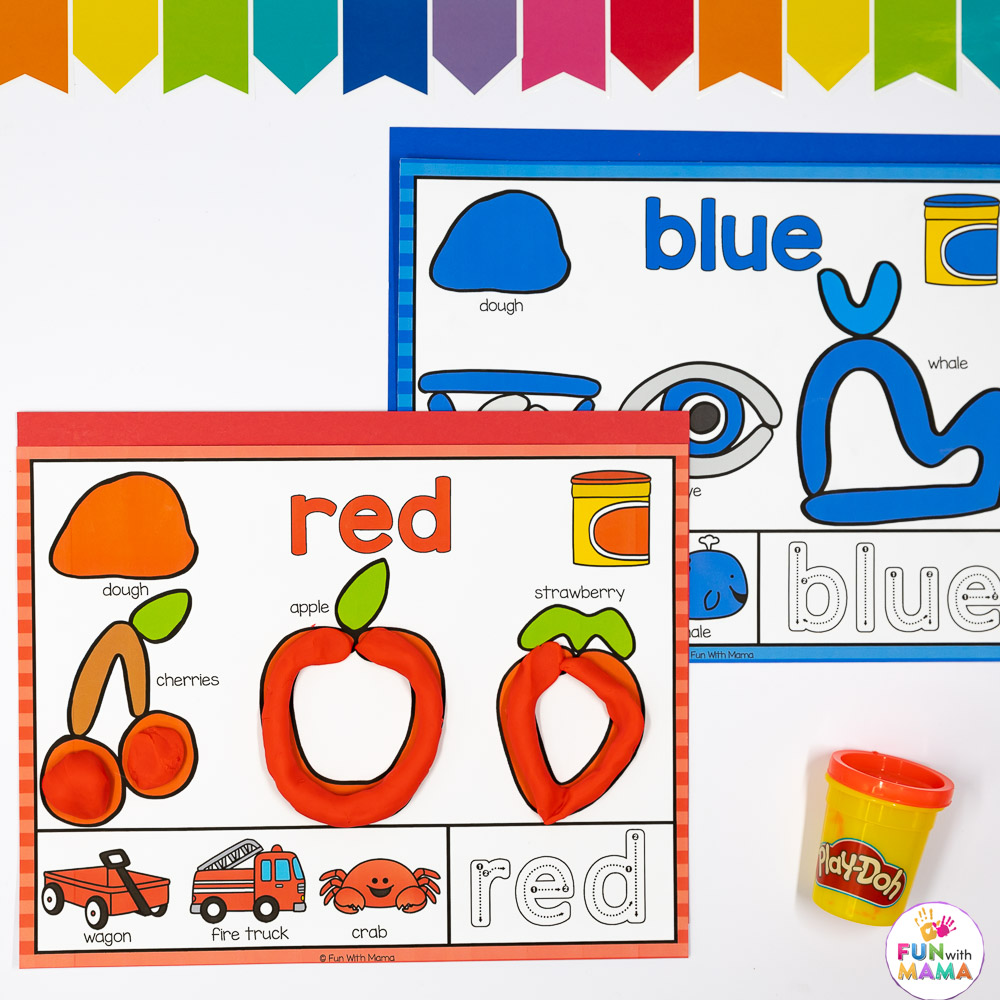 red and blue color themed play dough mats" width="1000" height="1000" />
red and blue color themed play dough mats" width="1000" height="1000" />
Roll and create the pictures with the correct color play dough. Then identify the pictures. Older students can then trace the word.
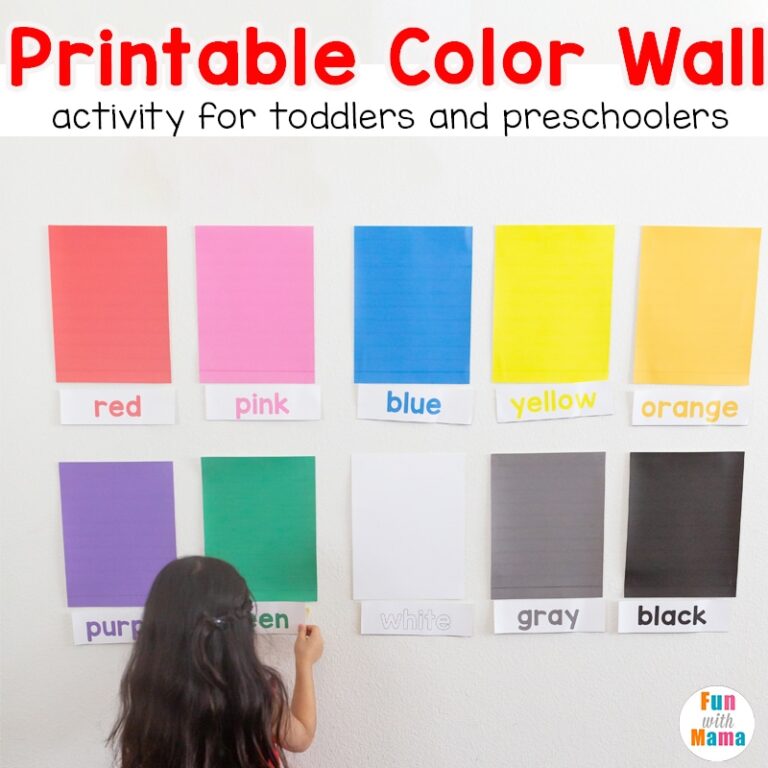
Place the colors onto a wall with some sticky tape. Then add sticky tape below so children can place the correct word under the color.
Many of the activities can be paired with manipulatives and figurines you already have at home or in your classroom. For example, the color-matching mats can be used with colored spiders, colored bugs, and more!
Grab a sample from the pack by checking out the color wall freebie.
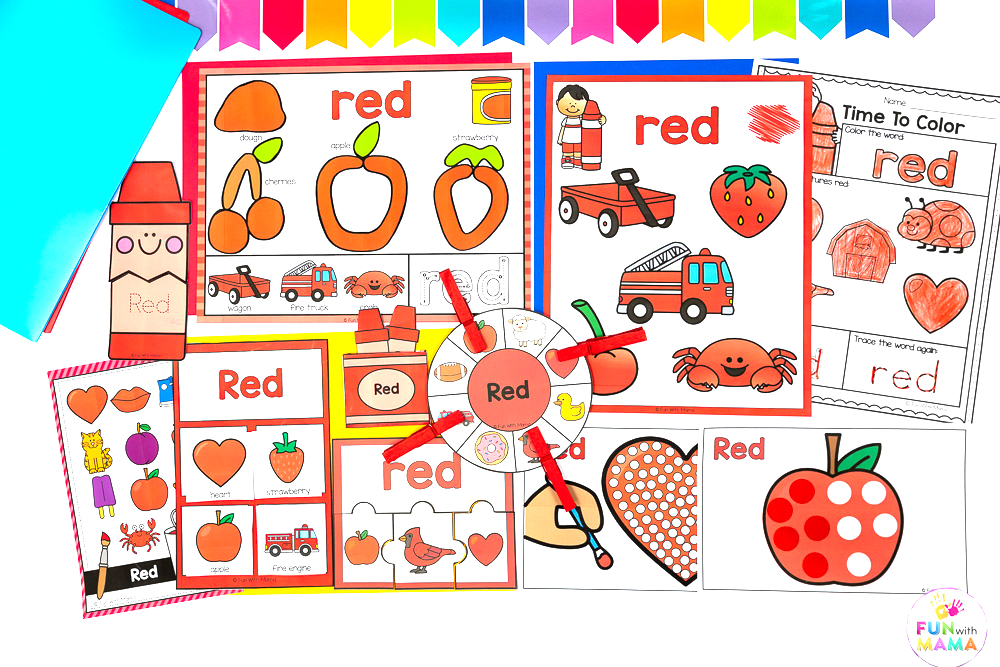
Here are the color red activities for preschool. Each color, for example the color blue activities for preschool, are all contained together so that you can easily print and teach one color at a time.
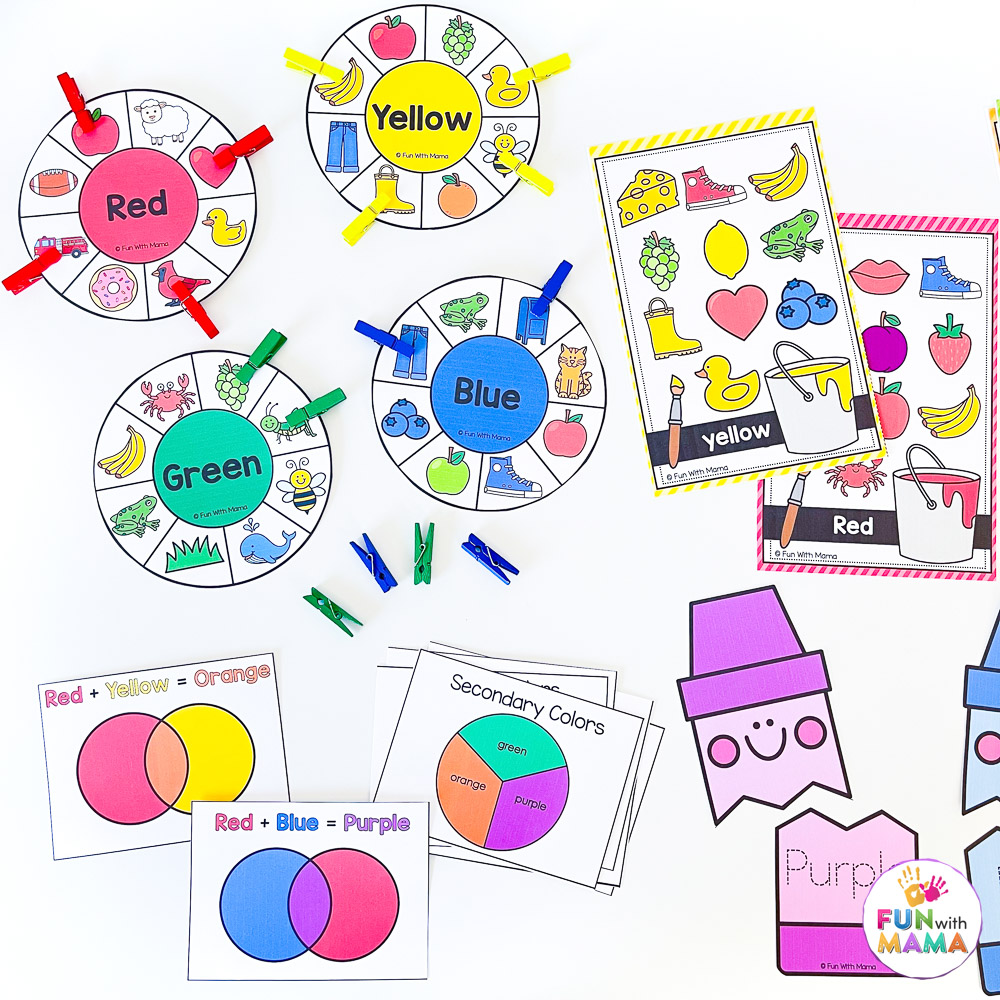
Check out the no-prep worksheets included:
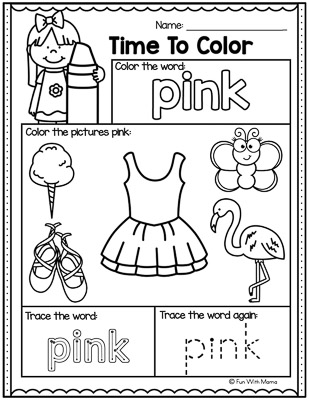
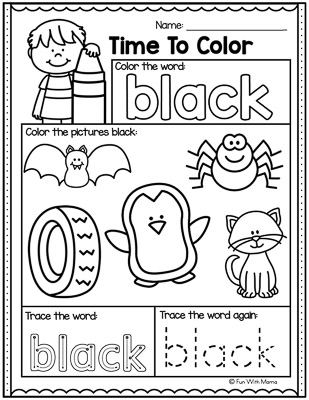
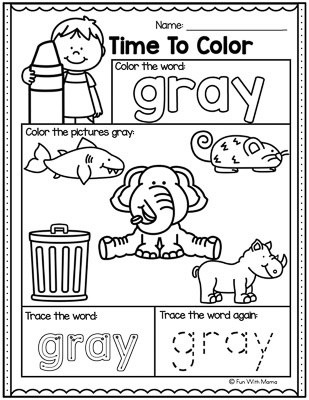
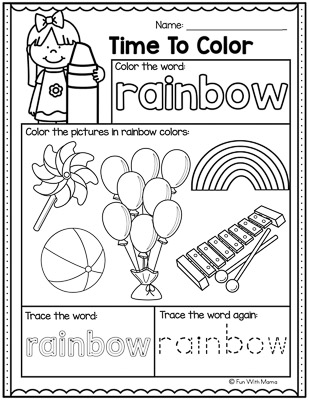
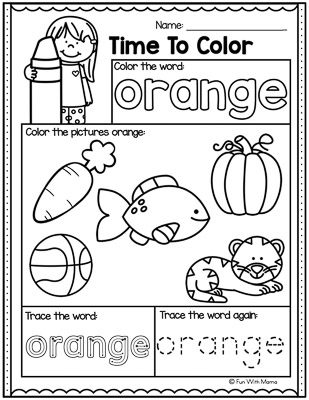
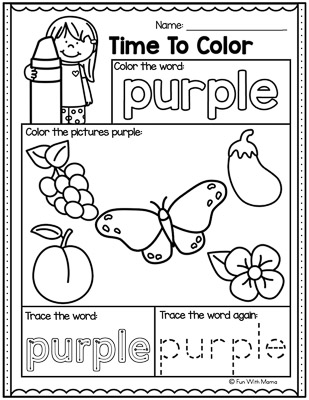
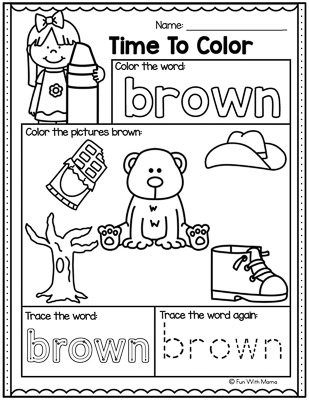
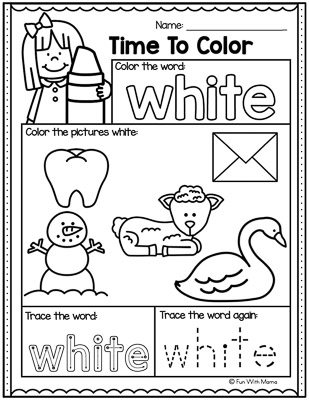
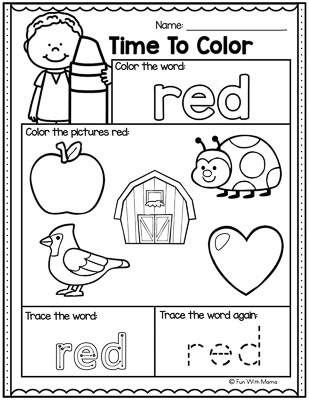
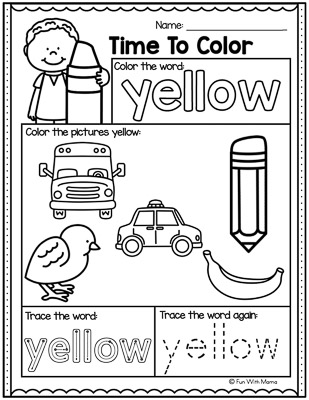
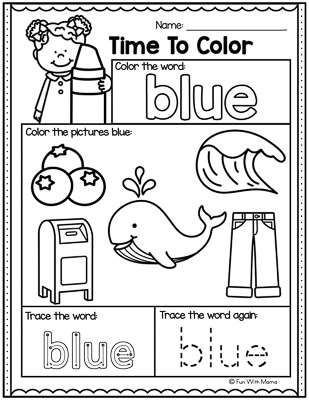
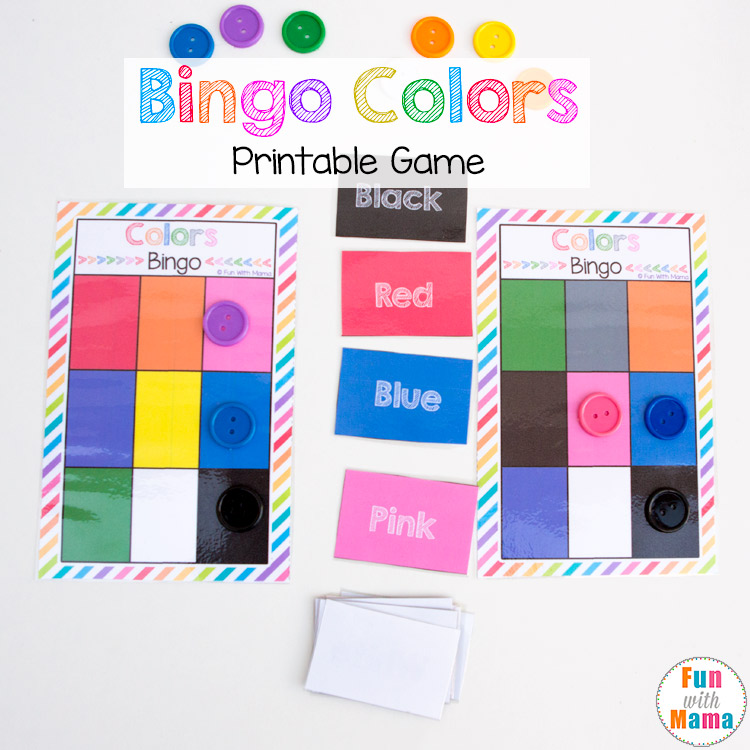
Play a bingo colors game while working on color recognition.
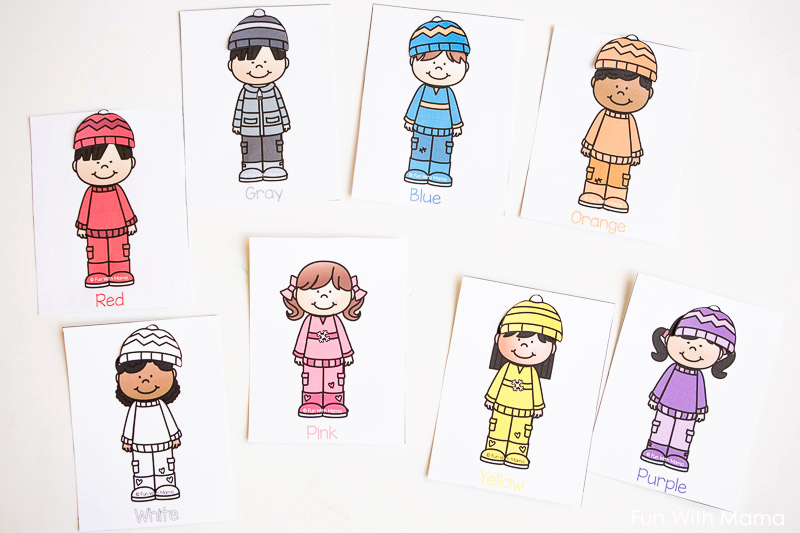
Winter hat matching activity – Match the colored hat to the child wearing the same color clothing.
When doing color activities for preschoolers, you know that we can’t miss out on adding a sensory bin for more color exploration
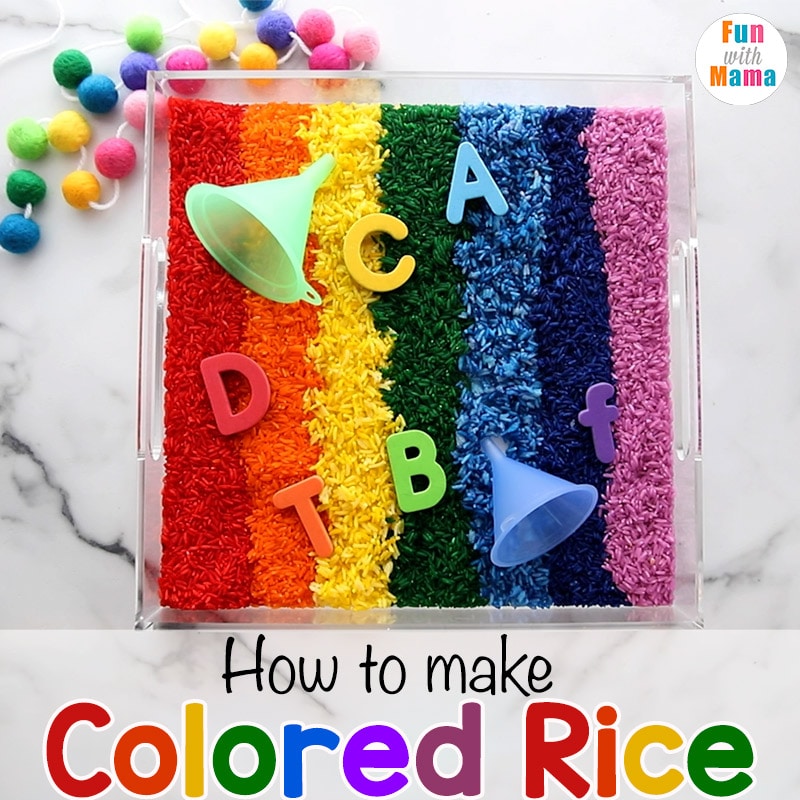 with alphabet letters" width="800" height="800" />
with alphabet letters" width="800" height="800" />
The kids ADORE rainbow sensory bins and it’s really easy to make colored rice. Learn how to make a colored rice rainbow sensory bin.
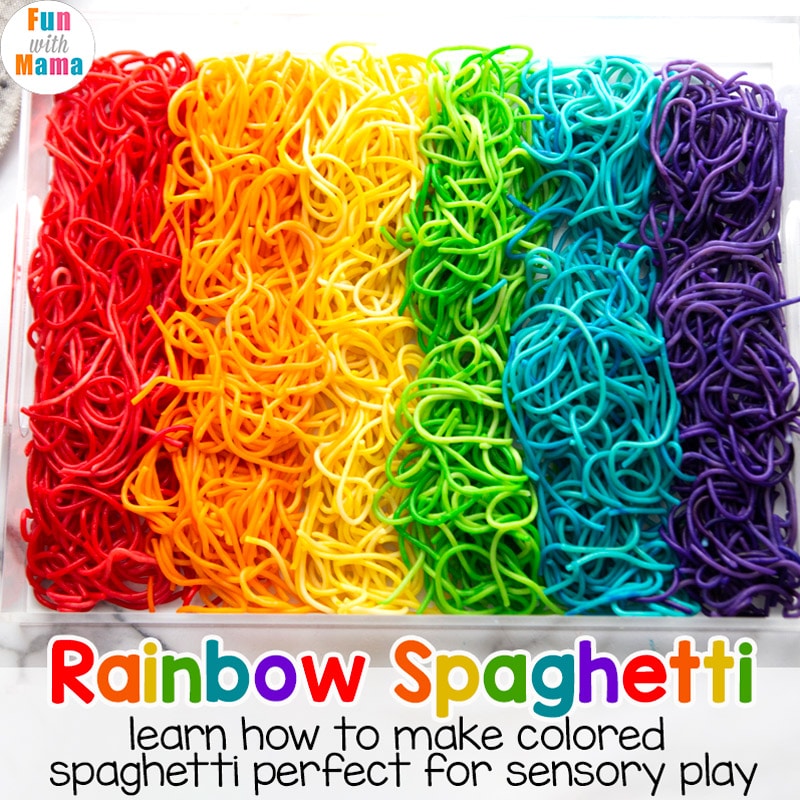
Rainbow spaghetti is also a fun and messy way to explore colors. Hide colored items in the spaghetti and have children search and find them. It’s a wonderful sensory activity.
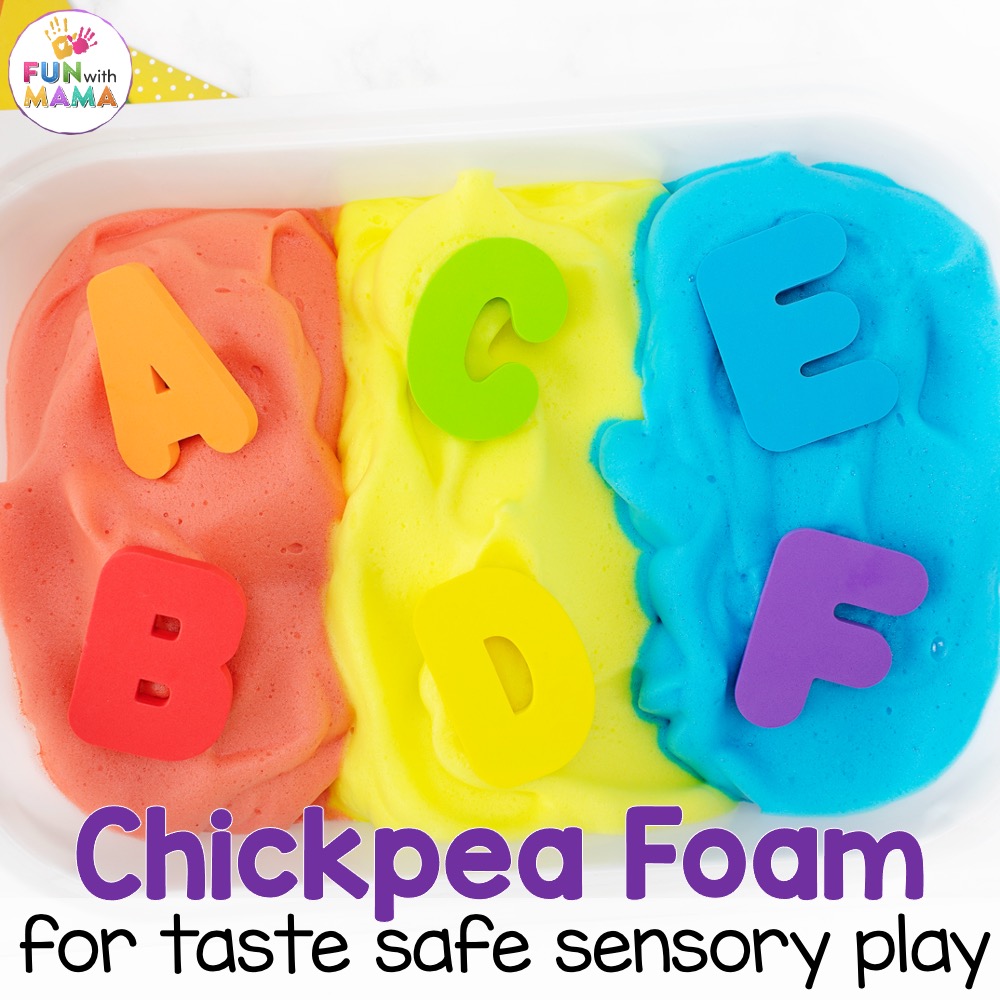
Choose the colors you want to work on. You can do one at a time, two at a time, the choice is yours. Then create a chickpea foam sensory bin.
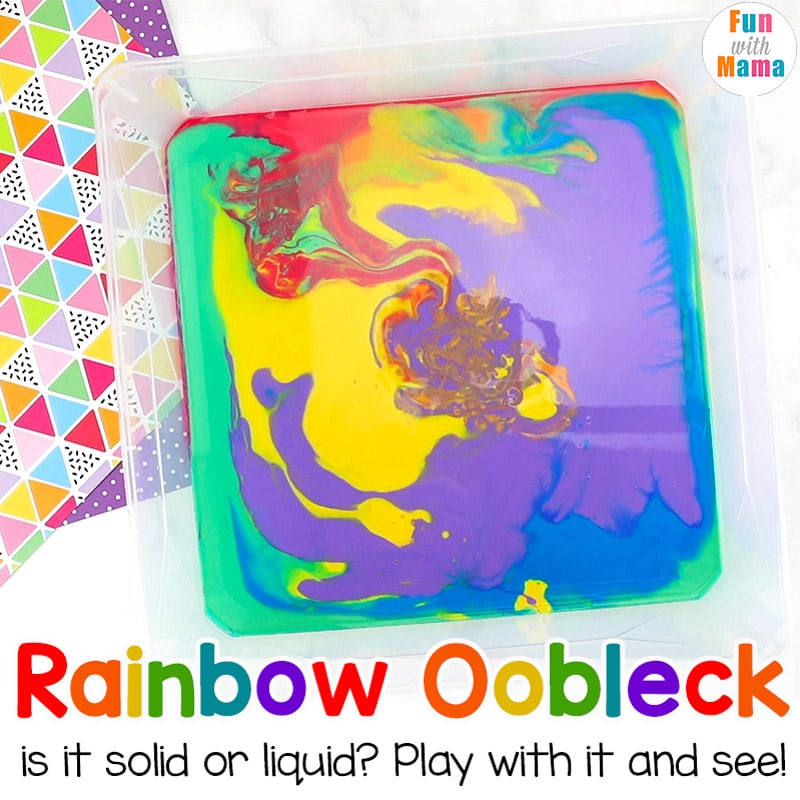
Make a rainbow of colors with oobleck. Oobleck is, without a doubt, one of our favorite sensory activities for kids of ALL ages. While muddy oobleck is my kids favorite (it smells SO good), the rainbow oobleck activity is a close second. Learn how to make oobleck here.
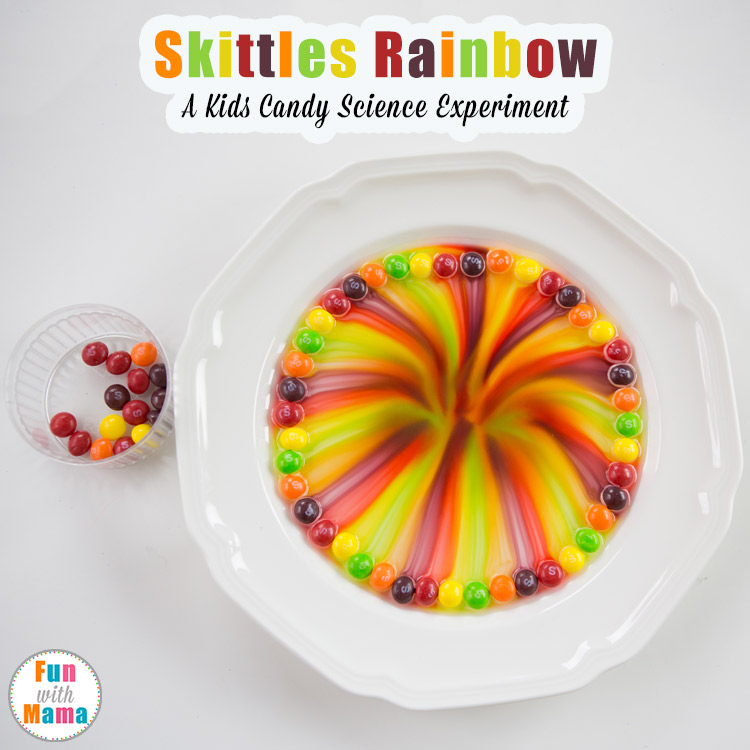
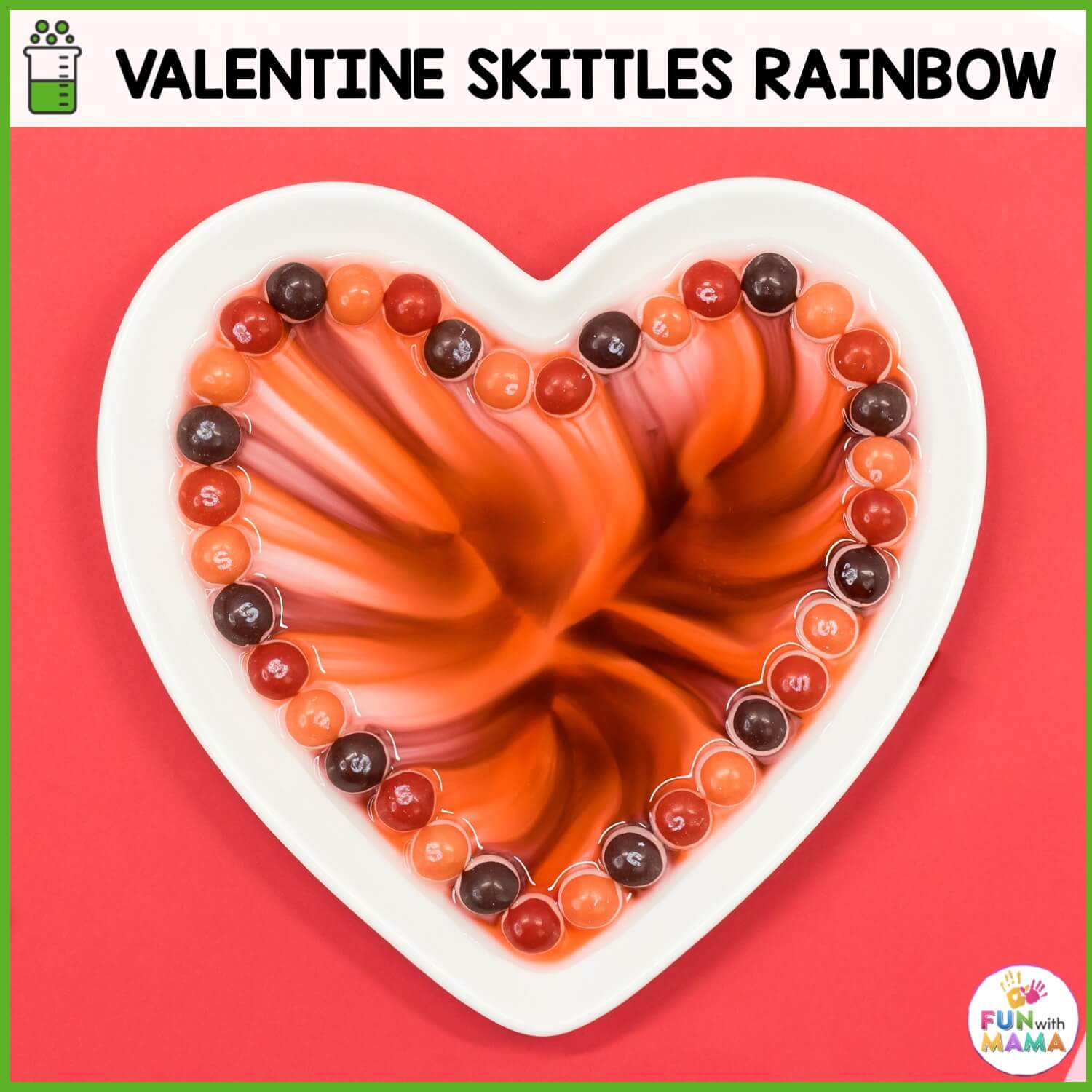
The skittles rainbow experiment always gives you a bright and colorful explosion of colors. You can make this a single-color activity by only using Skittles of one color or use 2-3 colors as per your lesson.
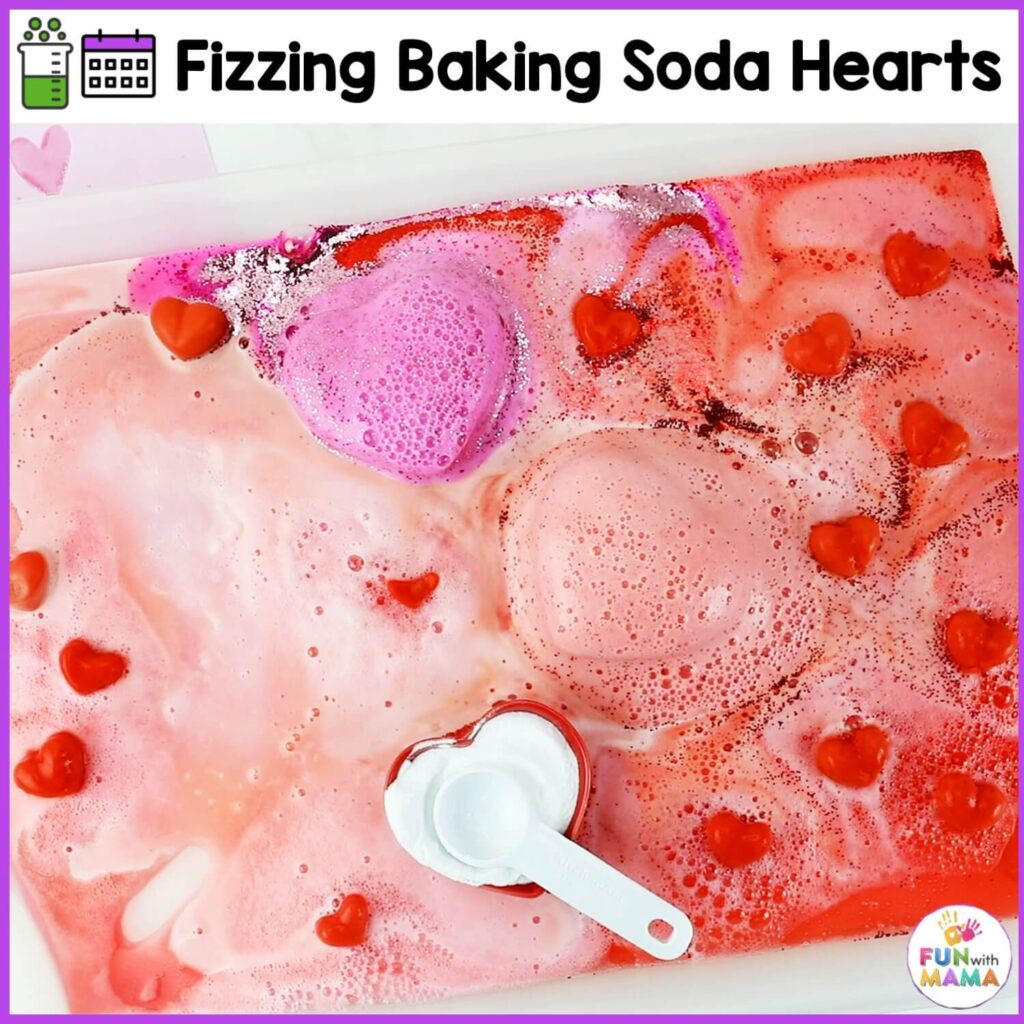
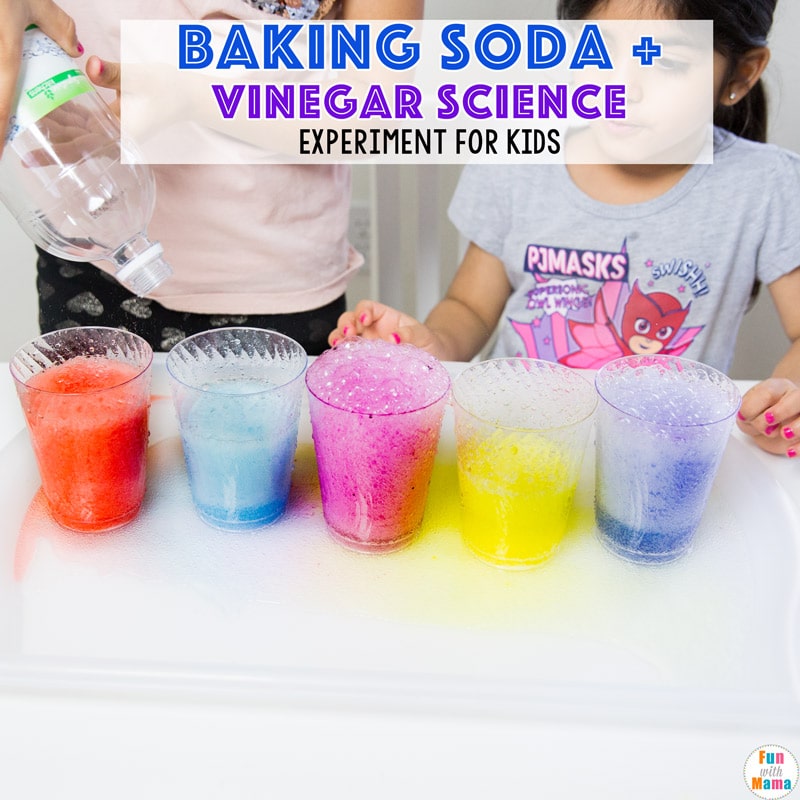
You can make it with a rainbow of colors or choose a single color to explore it and it’s different shades.
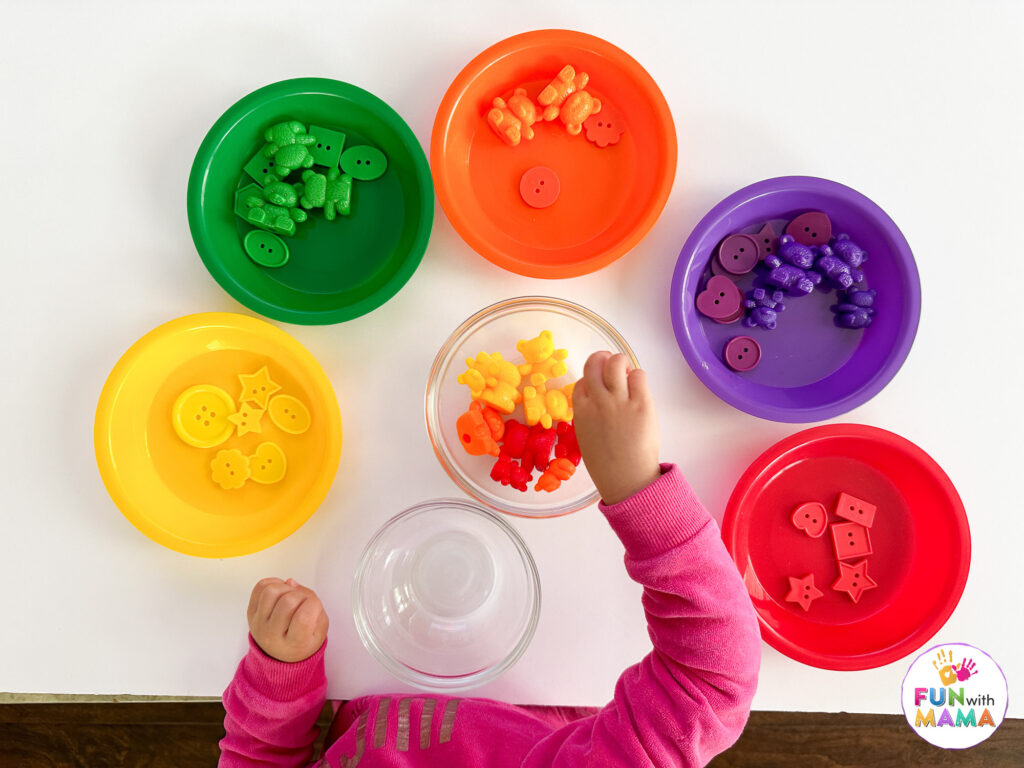
Another great activity for color sorting is to match objects according to colors. Here we used counting bears and colored buttons.
You can get yourself a set of colorful bowls (or colorful cups) for sorting and re-use them during counting activities.
We have a variety of colorful counters which you can find here: Preschool Activity Supplies
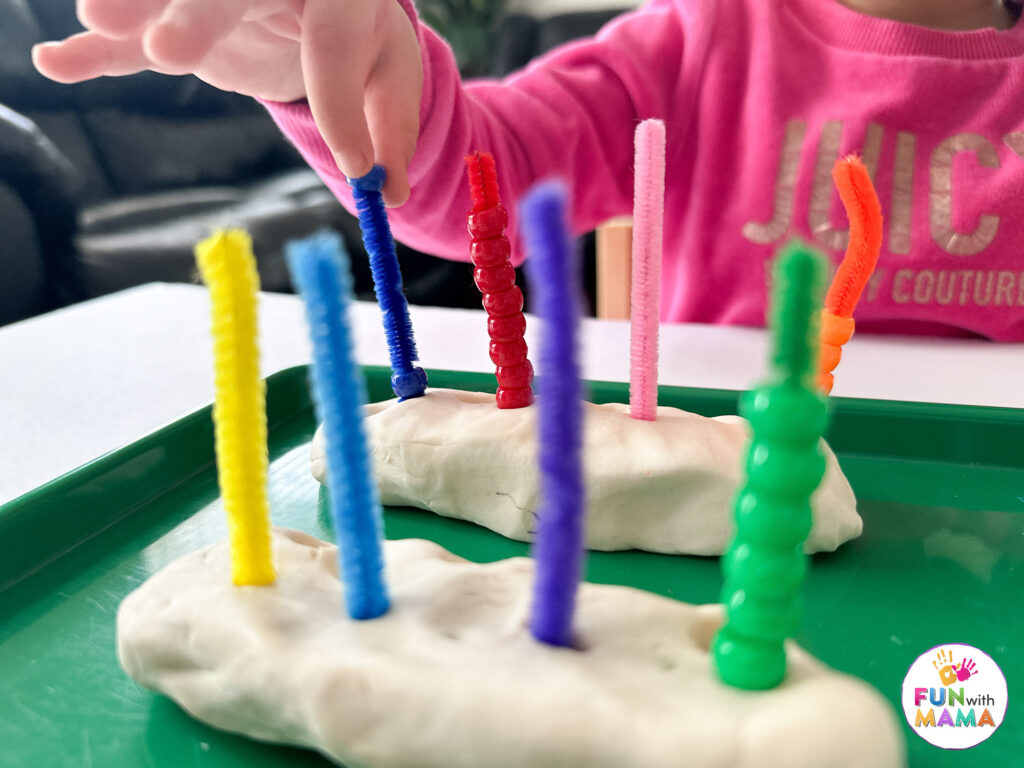
This activity above is wonderful for working fine motor skills and visual discrimination of colors. We used our homemade play dough recipe to make play dough, cut some pipe cleaners, and added pony beads. My 2 year old then threaded the beads through the pipe cleaners.
WHERE TO GET THIS ACTIVITY
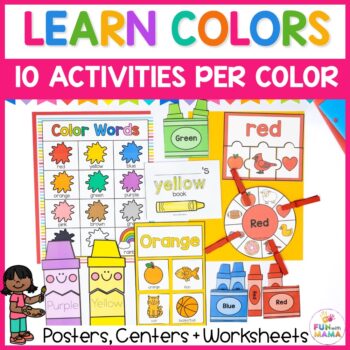
This color centers for preschool, pre-k and kindergarten resource will help your students develop color identification and color matching skills in a fun and playful format. It is packed with 10 activities per color, no prep worksheets and mini books, color identification mats, and MORE.
Why is teaching colors so important for preschoolers?It helps children develop vocabulary, makes it easier to navigate their daily life and preferences, and enhances cognitive development.
At what age do kids learn colors?Kids typically learn colors between the ages of 2 and 3 years old.
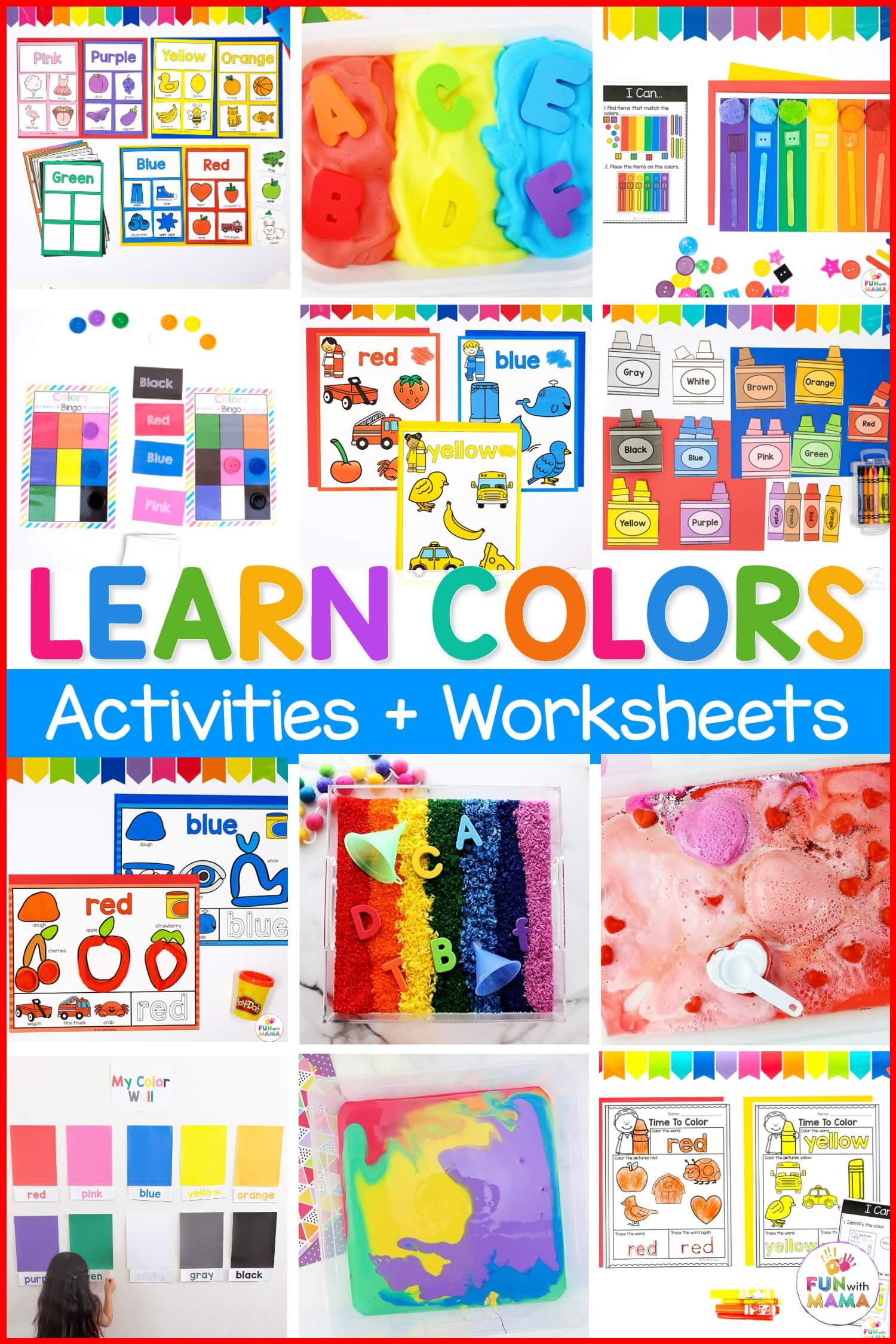
After learning colors, start working on some Shapes Activities For Preschoolers
More color activeities:
Check out this my color is rainbow book pairing activity.